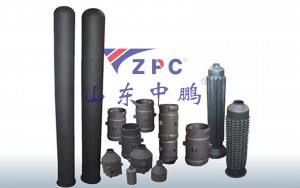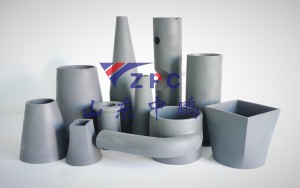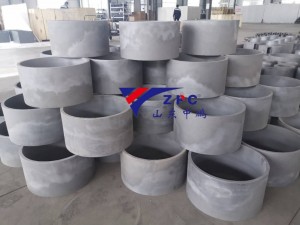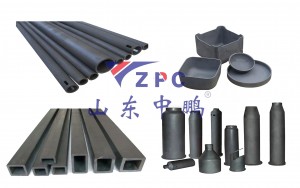Silicon carbide (SiC) ceramics, renowned for their exceptional strength, hardness, high-temperature resistance, and corrosion resilience, are poised to revolutionize industries ranging from energy to aerospace. Beyond their intrinsic material advantages, the evolving landscape of technology, policy, and sustainability is driving unprecedented growth opportunities for SiC ceramics. This article explores the transformative development prospects of SiC ceramics, focusing on market dynamics, innovation trends, and global industrial shifts that distinguish its future trajectory from conventional applications. 
1. Explosive Market Expansion Driven by Cross-Industry Demand
The global SiC ceramics market is projected to grow at a CAGR of 9.2% from 2024 to 2030, fueled by its irreplaceable role in next-generation technologies:
(1)Semiconductor Dominance: As the backbone of power electronics in EVs and renewable energy systems, SiC ceramic substrates are critical for high-voltage, high-frequency devices. The EV sector alone is expected to drive 30% of SiC demand by 2030.
(2)Space Economy: With over 15,000 satellites slated for launch this decade, SiC ceramics are vital for lightweight, radiation-resistant components in satellite thrusters and thermal shields.
(3)Hydrogen Revolution: Solid oxide electrolyzers (SOEC) for green hydrogen production rely on SiC’s stability in extreme redox environments, aligning with global decarbonization targets.
2. Global Policy Tailwinds Reshaping Supply Chains
Governments are prioritizing SiC ceramics in national strategic plans:
(1)U.S. CHIPS Act: Allocates $52 billion to strengthen semiconductor supply chains, with SiC wafer production receiving targeted subsidies.
(2)China’s 14th Five-Year Plan: Designates advanced ceramics as a “key new material,” aiming for 70% domestic self-sufficiency in SiC components by 2025.
(3)EU Critical Raw Materials Act: Includes silicon carbide in its list of strategic materials, incentivizing localized production to reduce reliance on Asian imports.
3. Technological Leapfrogging in Manufacturing
Breakthroughs in synthesis and processing are overcoming historical bottlenecks:
(1)Additive Manufacturing: Laser-based 3D printing now enables complex, near-net-shape SiC components with <20 μm precision, reducing material waste by 40%.
(2)AI-Driven Process Optimization: Machine learning algorithms are cutting sintering times by 35% while enhancing fracture toughness by up to 25%.
(3)Quantum Leap in Purity: Plasma-enhanced chemical vapor deposition (PE-CVD) achieves 99.9995% pure SiC coatings, unlocking biomedical applications in joint replacements and dental implants.
4. Sustainability as a Growth Accelerator
SiC ceramics are becoming the linchpin of circular industrial systems:
(1)Carbon Neutrality Enabler: SiC-lined reactors improve catalytic efficiency in carbon capture systems by 18%, directly supporting net-zero goals.
(2)Lifecycle Superiority: Compared to traditional metals, SiC components in industrial furnaces reduce energy consumption by 22% over their 10+ year lifespan.
(3)Recycling Innovation: New hydrometallurgical processes recover 95% of SiC from end-of-life components, transforming waste into high-purity feedstock.
5. The New Competitive Frontier: Ecosystem Collaboration
As market competition intensifies, success hinges on strategic partnerships:
(1)Vertical Integration: Leaders like CoorsTek and KYOCERA are acquiring silicon carbide feedstock mines to secure supply chains.
(2)Cross-Industry Alliances: Automotive giants (e.g., Tesla) are co-developing SiC ceramic brake disks with material suppliers, targeting 50% weight reduction versus cast iron.
(3)Open Innovation Platforms: The Global SiC Consortium, launched in 2023, pools R&D resources from 50+ organizations to standardize testing protocols and accelerate certification processes.
6. Emerging Markets Redefining Demand Geography
While traditional markets mature, new epicenters of growth are emerging:
(1)Southeast Asia: Semiconductor fabs in Malaysia and Vietnam will drive $1.2 billion in regional SiC ceramic demand by 2027.
(2)Africa: Mining modernization projects in the Copperbelt region require SiC-based wear parts, creating a $300 million niche market.
(3)Arctic Infrastructure: As polar routes open, SiC ceramics are essential for ice-resistant sensors and low-temperature fuel cells in Arctic logistics hubs.
Conclusion: Navigating the SiC Ceramics Renaissance
The silicon carbide ceramics industry stands at an inflection point, where technological ambition meets geopolitical and environmental urgency. With a projected market value exceeding $12 billion by 2030, its growth will be shaped not just by material properties, but by how effectively stakeholders can:
- Leverage public-private funding mechanisms
- Bridge the talent gap through specialized ceramic engineering programs
- Develop agile, multi-tiered supply chains
- Align product roadmaps with UN Sustainable Development Goals
For forward-thinking enterprises, silicon carbide ceramics represent more than a high-performance material—they are a strategic asset in the global race for technological sovereignty and sustainable industrialization. The question is no longer if SiC ceramics will transform industries, but how quickly organizations can adapt to harness their full potential.
Post time: Mar-19-2025